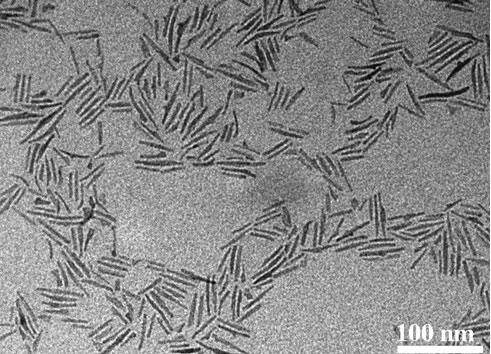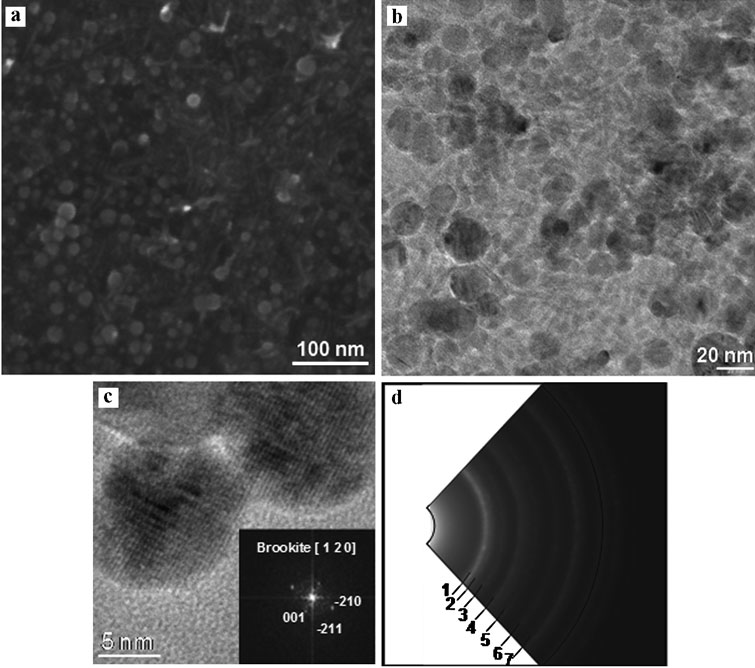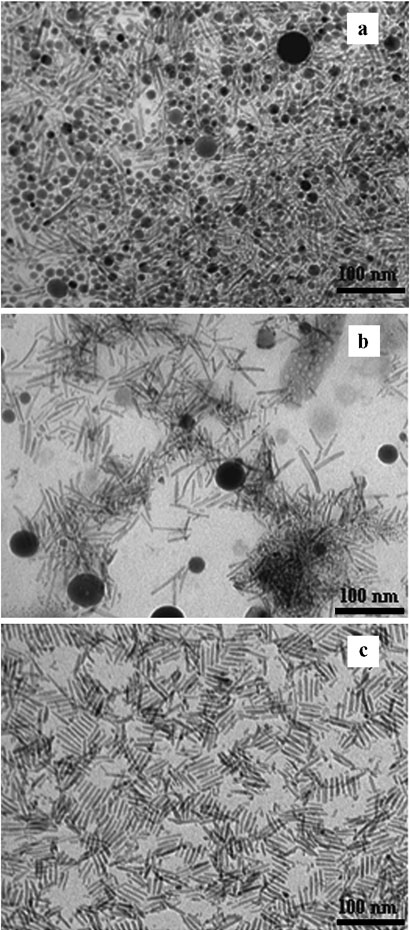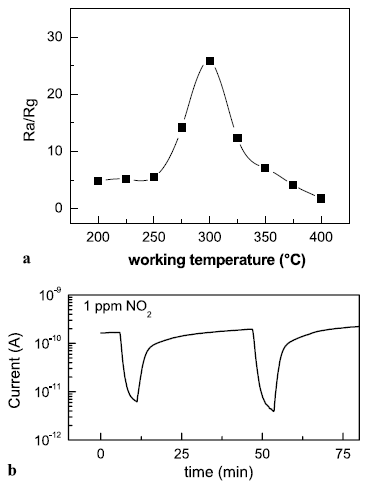|
Film deposition of TiO2 nanorods
Chemically synthesized brookite
titanium dioxide (TiO2)
nanorods with average diameter and
length dimensions of 3–4 nm and 35–50 nm, respectively, were deposited by
the matrix-assisted pulsed laser evaporation technique.
A toluene nanorod solution was
frozen at the liquid-nitrogen temperature and irradiated with a KrF excimer
laser (λ
= 248 nm,
τ =
20 ns) at the repetition rate of 10 Hz, at
different fluences (25 to 350 mJ/cm2).
The deposited films were
structurally characterized by high resolution scanning and transmission
electron microscopy. <100>
single-crystal Si wafers and carbon-coated Cu grids
were used as substrates. Structural analyses evidenced the occurrence of
brookite-phase crystalline nanospheres coexisting with individually
distinguishable TiO2 nanorods in the films deposited at fluences varying
from 50 to 350 mJ/cm2.
Nanostructured TiO2
films comprising only nanorods were deposited by lowering the laser fluence
to 25 mJ/cm2.
The observed shape and phase transitions of the nanorods are discussed
taking into account the laser-induced heating effects, reduced melting
temperature and size-dependent thermodynamic stability of nanoscale TiO2.
Spectrophotometric analysis showed high transparency
through the UV-Vis spectral range. Promising resistive sensing responses to
1 ppm of NO 2
mixed in dry air were obtained.

Fig. 1
Bright-field TEM image of the as-prepared colloidal TiO2
nanorods

Fig. 2 (a)
High-resolution SEM and (b)
BF TEM images of the TiO2 nanostructured films deposited by MAPLE on Si- and
carbon-coated Cu grid substrates, respectively; (c)
HRTEM image of individual TiO2 spheres along with the relevant FFTs pattern
(inset);
(d)
SAED obtained from a region of the film including both nanospheres and
nanorods. The numbering of the diffraction rings is related to the indexing
of the pattern.

Fig. 3 BF TEM
images of the TiO2 nanocrystals deposited at the fluence
of ( a)
100 mJ/cm2,
(b)
50 mJ/cm2
and (c)
25 mJ/cm2

Fig. 4 a Sensor
response for different working temperatures under
1 ppm NO2 exposure;
b typical dynamic response
to the NO2 presence/
absence at the working temperature of 300 ◦C
|
